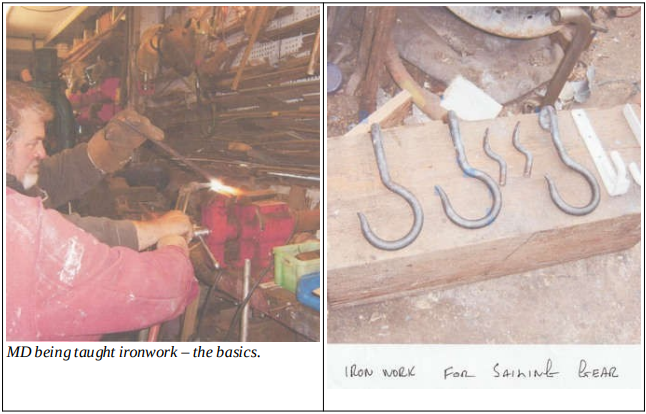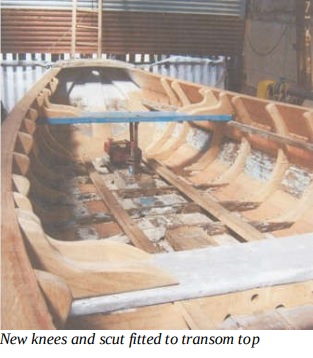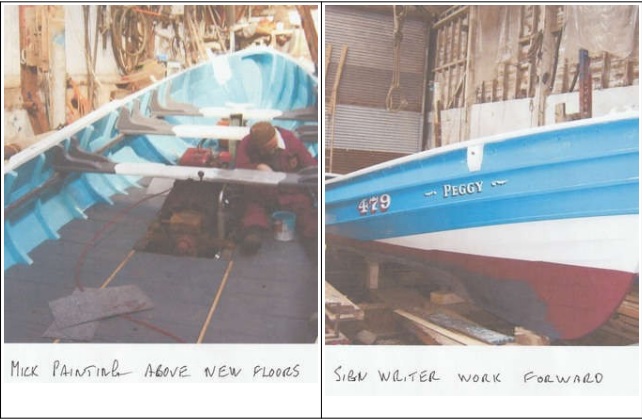With the engine now in place we connect up the propeller shaft and put in new gland packing and grease up.
(Unfortunately we were unable to procure a two blade propeller with the universal coupling so the three blade propeller was reinstalled and Peggy remained a coble that could not be beached because the propeller shaft had to remain in the locked down position – MD).
The propeller and shaft on this boat is unusual and becoming quite rare, it is designed to be lifted up between the bilge keels when the boat is beached, but also to reduce the drag effect when under sail the propeller is also unusual as it only has two blades enabling it to gain maximum height between the bilge keels.
Just to the front of the inspection box there is a stern gland installed in the vertical position the shaft through this has 2 holes drilled through for the 2 positions raised or locked down when in use.
To make this work the lift on the outboard propeller shaft close to the gland there is a universal joint then a second shaft goes into a swivel bearing on the end of the upright shaft. This works well and is a proven design, only problem it can rattle and vibrate a bit when in use.
Page 20.
Fittings
Now its time for a change in material. It’s iron work we need with the help of our faithful stove and the gas torch its making the sailing gear and the rudder fittings, lots of heat, the anvil and big hammers.
We make three large sailing hooks, two fixing points and two shroud plates.
Two plates to fit on the rudder with long pins, these are always about 9 inches long the reason being you don’t want the rudder to jump out the eye plates in bad weather. A plate for the bottom pin to fit through will be bolted through the base of the horseshoe and on the inside of these bolts a plate with a ring welded on to take the stern mooring ropes.
The top pin on the rudder goes through the back edge of the oak scut.

Page 21.






























